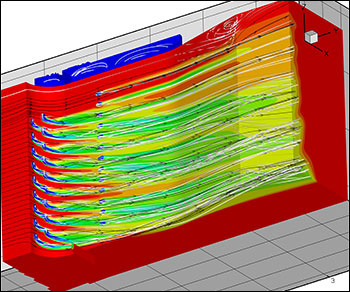CFD Visualization Helps Protect Integrity of Buildings, Bridges, and Ships
November 2010 When Adam Hapij, senior associate at the structural engineering firm Weidlinger Associates, recently visited his son’s kindergarten class, he tried to explain what he does in a way a 5-year-old could comprehend. In the end, he simply said, “I protect people.” Indeed, at its very core, Hapij’s job is to protect people. Since Weidlinger opened for business more than half a century ago, the company has designed all […]







